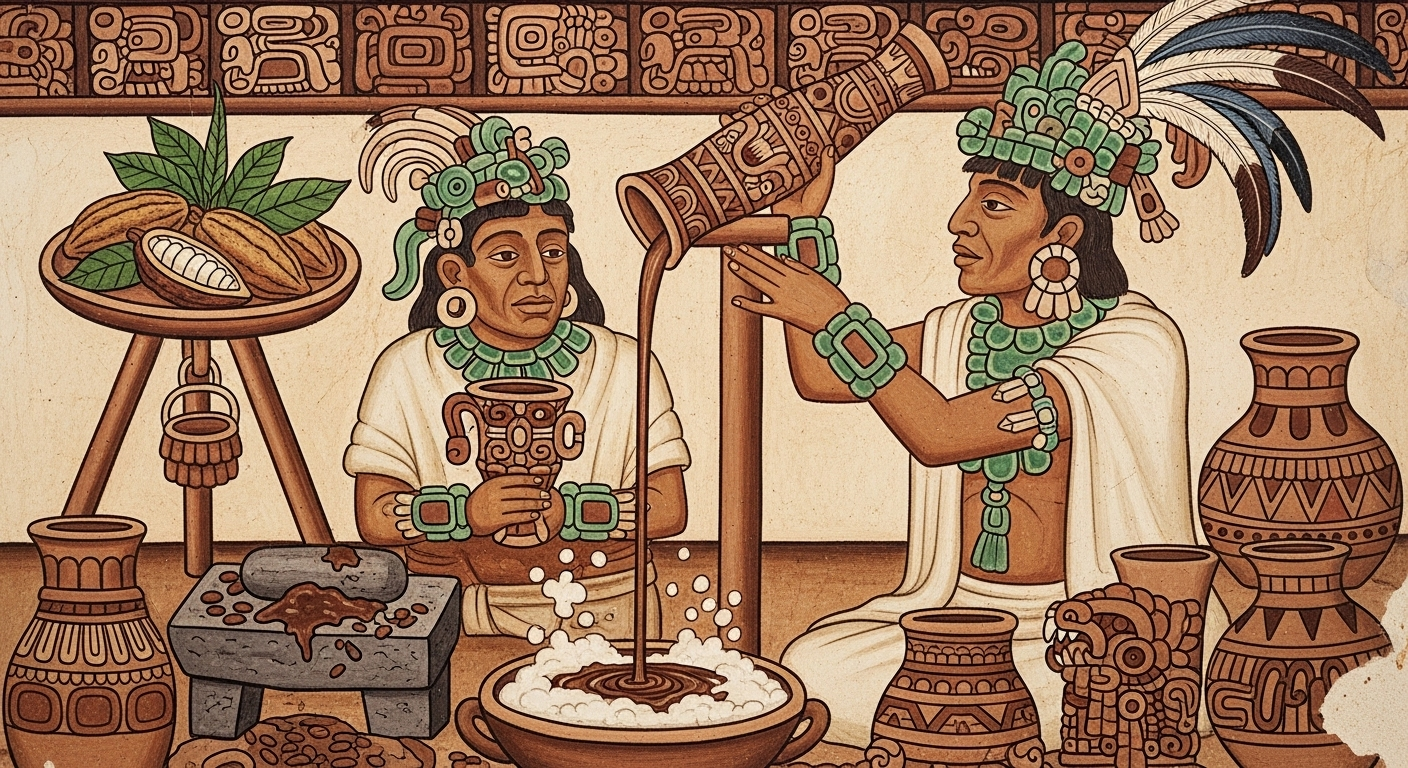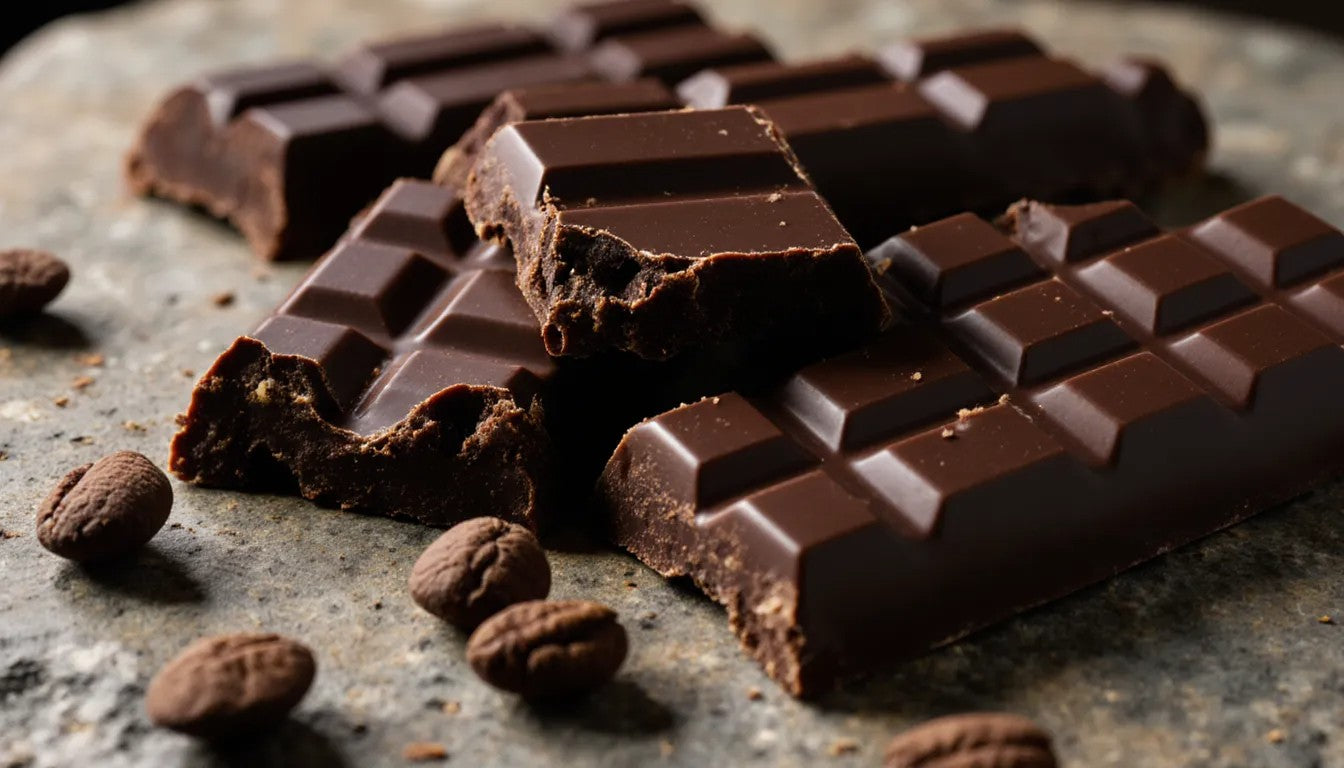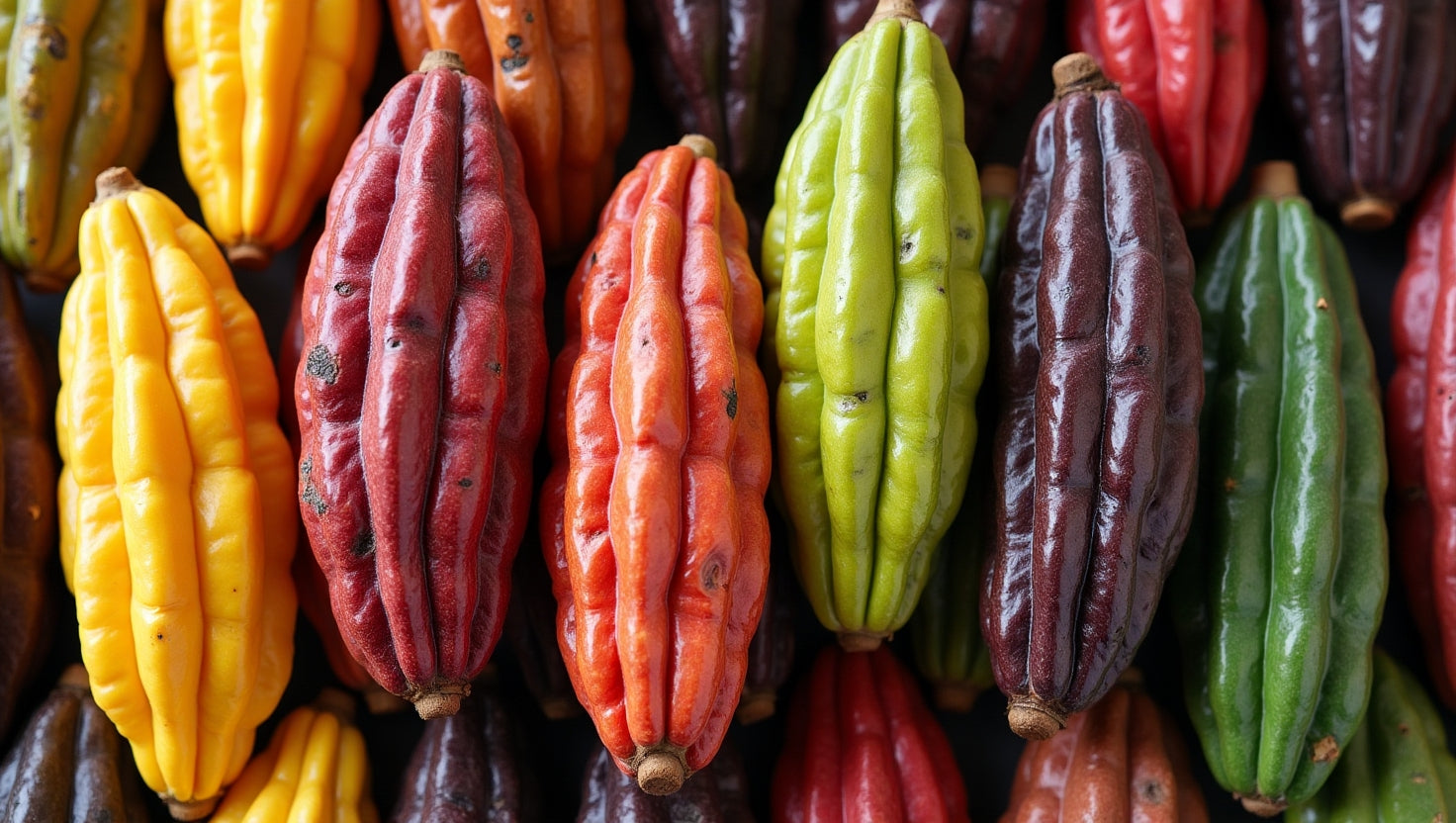
When Was Chocolate Invented? The Fascinating 4,000-Year Journey
Chocolate is more than just a beloved treat – it's a food with a rich historical legacy spanning thousands of years and multiple civilizations. From its ancient origins as a bitter ceremonial beverage to the sophisticated confections we enjoy today, chocolate's evolution reflects human ingenuity, cultural exchange, and technological advancement. At Coracao Confections, we're proud to be part of this continuing story, creating chocolates that honor both chocolate's sacred past and its exciting future.
The Ancient Origins of Chocolate: Earlier Than You Might Think
The story of chocolate begins not with the sweet bars we know today, but with a bitter drink consumed by ancient Mesoamerican civilizations. Archaeological evidence suggests that chocolate was first consumed as early as 1900 BCE by pre-Olmec cultures in what is now Mexico.
The earliest documented use comes from the Olmec civilization, but it was the Maya (250-900 CE) who truly established chocolate's cultural significance. They created a drink called "xocolātl," made from ground cacao beans mixed with water, chili peppers, cornmeal, and other ingredients – nothing like the sweetened chocolate we enjoy today.
For these ancient Mesoamericans, cacao wasn't just food – it was sacred. The Maya considered cacao a gift from the gods and used chocolate drinks in religious ceremonies, royal rituals, and celebrations. Cacao beans were so valued that they were even used as currency throughout Mesoamerica.

The Aztec Empire: Chocolate as Power
When the Aztec Empire rose to prominence around the 14th century, they embraced chocolate with similar reverence. However, since cacao couldn't grow in the high altitudes of their capital Tenochtitlan (modern-day Mexico City), cacao beans became an imported luxury, further enhancing their value.
The Aztec ruler Montezuma II reportedly consumed large quantities of chocolate – some historical accounts suggest he drank 50 cups daily, believing it to be an aphrodisiac. The Aztecs typically enjoyed their chocolate cold, unlike the Maya who preferred it warm, but both civilizations valued the frothy texture created by pouring the liquid from a height.
Importantly, the chocolate consumed during this era bore little resemblance to modern chocolate. It was a bitter, often spicy drink, sometimes thickened with cornmeal, and without any sweetener. The word "chocolate" itself likely derives from the Nahuatl (Aztec language) word "xocolātl," combining "xococ" (bitter) and "ātl" (water).
Chocolate Comes to Europe: The Sweet Transformation Begins
The European chapter of chocolate history begins with Christopher Columbus, who encountered cacao beans during his fourth voyage to the Americas in 1502, though he didn't recognize their significance. It wasn't until Hernán Cortés arrived in Mexico in 1519 and witnessed the Aztec use of cacao that chocolate began its journey to Europe.
Spanish conquistadors observed Montezuma drinking chocolate and brought both cacao beans and processing equipment back to Spain. By the 1580s, Spanish ships were regularly transporting cacao from New Spain to Seville, but initially, chocolate remained a closely guarded Spanish secret.
The Europeans made a crucial modification to the traditional recipe – they added sugar. With this transformation, chocolate's popularity began to spread among European nobility. By the early 1600s, chocolate had reached Italy and France, often through royal marriages that connected the Spanish court with other European powers.
Throughout the 17th century, chocolate houses opened across Europe, becoming fashionable gathering places similar to coffee houses. However, due to high import costs and taxes, chocolate remained a luxury for the wealthy elite rather than an everyday treat.
The Industrial Revolution: Chocolate for the Masses
The chocolate we recognize today didn't exist until relatively recently in chocolate's long history. For nearly 90% of chocolate's existence, it was exclusively consumed as a beverage. The transformation from drink to solid began in the Industrial Revolution with a series of technological breakthroughs.
In 1828, Dutch chemist Coenraad Johannes van Houten patented a hydraulic press that could separate cocoa butter from roasted cacao beans, leaving behind a cake-like solid that could be pulverized into cocoa powder. This invention made it possible to mix cocoa powder with liquids and other ingredients much more consistently, and Van Houten also developed a process to treat the cocoa with alkaline salts (now known as "Dutch processing") to improve its mixability with water and give it a milder taste.
These innovations paved the way for the creation of solid chocolate. In 1847, British chocolate maker Joseph Fry discovered that adding back some of the cocoa butter to the processed cocoa powder created a paste that could be molded. This led to the first solid chocolate bar for eating rather than drinking.
The next major breakthrough came in 1875 when Swiss chocolatier Daniel Peter, after eight years of experimentation, successfully combined chocolate with milk powder (developed by his neighbor Henri Nestlé) to produce the first milk chocolate. Shortly after, in 1879, another Swiss chocolate maker, Rodolphe Lindt, invented the conching machine – a surface-scraping mixer that evenly distributes cocoa butter within chocolate and promotes flavor development through extended mixing, oxidation, and evaporation. This process gave chocolate its smooth, melt-in-your-mouth consistency.
The 20th Century: Chocolate Goes Global
The 20th century saw chocolate transform from a luxury item to an everyday indulgence available to people of all social classes. Mass production techniques, improved transportation, and increased cocoa cultivation in colonized regions of Africa (particularly Ghana and the Ivory Coast) made chocolate more affordable and widely available than ever before.
Companies like Hershey's in the United States pioneered mass production methods that could create millions of affordable chocolate bars, while European companies like Lindt, Cadbury, and Nestlé continued to refine recipes and production techniques.
By the mid-20th century, chocolate had become firmly embedded in global culture – from everyday snacks to holiday traditions. The invention of various specialized ingredients (like lecithin for consistency) and processing techniques allowed for an ever-expanding array of chocolate products with different textures, flavors, and shelf lives.
The Contemporary Chocolate Renaissance
In recent decades, we've witnessed what many call a "chocolate renaissance" – a return to artisanal production methods and a focus on chocolate's complex flavor potential. This movement began in the 1990s and gained momentum in the early 2000s with bean-to-bar chocolate makers focusing on single-origin cacao, ethical sourcing, and minimal processing.
Today's craft chocolate makers, including Coracao Confections, are redefining chocolate by emphasizing:
- Direct trade relationships with cacao farmers
- Small-batch processing that preserves flavor nuances
- Minimal ingredients without artificial additives
- Ethical and sustainable practices throughout the supply chain
- Education about chocolate's cultural and historical significance
The contemporary chocolate landscape celebrates both innovation and tradition. While large manufacturers continue to produce familiar chocolate products loved by millions, artisanal chocolate makers are exploring chocolate's roots – often creating bars with flavor profiles that might be more recognizable to ancient Mesoamericans than to consumers raised on mass-produced chocolate.
The Stone-Ground Connection to Chocolate's Origins
At Coracao Confections, we find particular meaning in our stone-grinding process. Our Stone Ground Dark Chocolate is created using granite stone grinders that, while modernized, employ principles similar to those used by the Maya and Aztecs, who ground cacao beans on metates (stone grinding slabs).
This traditional method preserves more of cacao's natural compounds and creates a distinctive texture that connects our products to chocolate's ancient origins. By combining these traditional techniques with our commitment to organic, minimally-processed ingredients, we create chocolate that honors both the past and future of this remarkable food.

Frequently Asked Questions About Chocolate's History
Who invented the first chocolate bar?
When was milk chocolate invented?
Did ancient civilizations really use cacao beans as currency?
How did chocolate become associated with Valentine's Day and romance?
What's the difference between cacao and cocoa?
Chocolate's Journey: From Sacred Beverage to Global Phenomenon
The story of chocolate's invention isn't a simple tale of one person's discovery but rather a 4,000-year evolution involving countless innovations across multiple continents. From its ancient Mesoamerican origins as a sacred, bitter beverage to today's diverse world of chocolate creations, each chapter in chocolate's history has added new dimensions to this remarkable food.
What makes chocolate truly special is how it connects us – across time, cultures, and traditions. When you break a piece of high-quality dark chocolate and savor its complex flavors, you're participating in an experience that has brought joy and cultural significance to humans for millennia.
At Coracao Confections, we're honored to be part of chocolate's ongoing story. By creating chocolates that respect chocolate's rich heritage – from our stone-grinding techniques to our careful sourcing of organic cacao – we strive to honor the past while innovating for the future. Our approach celebrates chocolate in its most authentic form: minimally processed, rich in natural compounds, and crafted with reverence for both the planet and the remarkable history of this extraordinary food.
Connect with chocolate's rich heritage by exploring our Stone Ground Chocolate Collection, crafted using techniques that honor chocolate's ancient origins while creating exceptionally flavorful, nutrient-dense chocolate. Or discover the full range of our chocolates created with the same commitment to quality and authenticity that has defined the finest chocolate throughout its 4,000-year journey.
What aspect of chocolate's history fascinates you most? Share your thoughts or questions in the comments below!

Claire Bennett
I'm Claire, a chocolate lover and artisan based in a small town where I run a tiny home kitchen dedicated to exploring everything chocolate. From single-origin dark bars to creamy ganache and handmade truffles, I find joy in working with all types of chocolate. I believe chocolate has a story, and I love bringing that story to life through humble, heartfelt creations.



Leave a comment
This site is protected by hCaptcha and the hCaptcha Privacy Policy and Terms of Service apply.